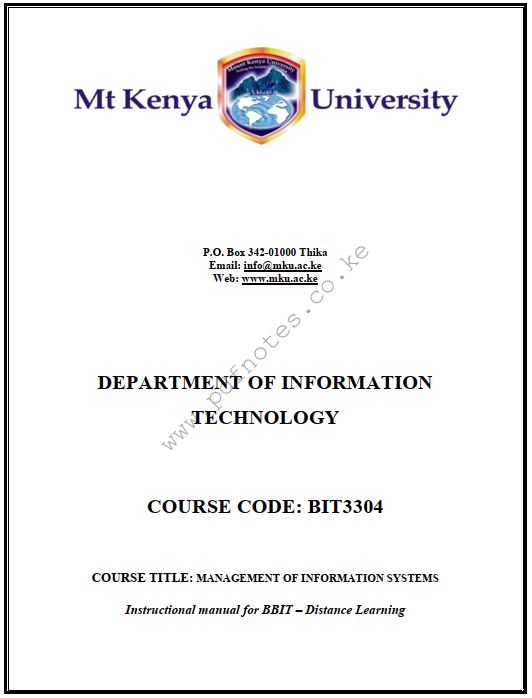
CHAPTER 1
INFORMATION, SYSTEMS, AND INFORMATION SYSTEMS CONCEPTS
1.1 Definition of a system
1.2 Why information systems
1.3 Why information systems matter
1.4 Strategic Opportunity and Advantage
1.5 Why IT Now? Digital Convergence and the Changing Business Environment
CHAPTER 2
IT INFRASTRUCTURE AND PLATFORMS
2.1 Defining I.T. Infrastructure
2.2 Levels of IT Infrastructure
2.3 Evolution of IT Infrastructure: 1950-2005
Technology Drivers of Infrastructure Evolution
2.4 Infrastructure Components
Networking/Telecommunications Platforms
2.5 Management Challenges
Suggested Further Reading
Chapter Review Questions
CHAPTER 3
INFORMATION SYSTEMS IN THE ENTERPRISE
3.1 Levels of Management
3.2 Different Kinds of systems
3.3 Four major types of systems
Transaction processing system (TPS):
Decision support system (DSS):
Management information system (MIS) :
Executive information system (EIS):
3.4 Management Opportunities, Challenges, and Solutions
CHAPTER 4
I.S MANAGEMENT AND STRATEGY
4.1 What Is an Organization?
4.2 Common Features of Organizations
4.3 Strategic advantages of Information Technology
4.4 Management Opportunities, Challenges, and Solutions
Solution Guidelines
CHAPTER 5
UNDERSTANDING THE BUSINESS VALUE OF SYSTEMS AND MANAGING CHANGE
5.1 Understanding the Business Value of Information Systems
5.2 Traditional Capital Budgeting Models
5.3 Financial Models
5.4 Causes of Implementation Success and Failure
5.5 Change Management Challenges
Controlling Risk Factors
5.6 Management Opportunities, Challenges, and Solutions
Opportunities
Management Challenges
CHAPTER 6
PLANNING FOR INFORMATION TECHNOLOGY AND SYSTEMS
6.1 Issues in IT Planning
6.2 A four-stage model of IT planning
CHAPTER 7
MANAGING INFORMATION SYSTEMS RESOURCE; CONTROL AND SECURITY
7.1 System Vulnerability and Abuse
7.2 Vulnerabilities
Malicious Software: Viruses, Worms, Trojan Horses, and Spyware
Hackers and Cybervandalism
Internal Threats: Employees
7.3 General Controls
7.4 Management Challenges
CHAPTER 8
REDESIGNING THE ORGANIZATION WITH INFORMATION SYSTEMS
8.1 Systems as Planned Organizational Change
8.2 Strategic Analysis or Critical Success Factors
8.3 Systems Development and Organizational Change
8.4 Business Process Reengineering and Process Improvement
8.5 How Information Systems Support Quality Improvements
8.6 Overview of Systems Development
8.7 Management Opportunities and Challenges
Opportunities
Management Challenges
Solution Guidelines
Suggested Further Reading
CHAPTER 9
IMPACT OF IT IN ORGANISATIONS AND SOCIETY
9.1 Understanding Ethical and social issues Related to Systems
9.2 Five moral dimensions of the information Age
9.3 Ethics In An Information Society
9.4 Ethical Analysis
9.5 Property Rights: Intellectual Property
9.6 Quality Of Life: Equity, Access, and Boundaries
9.7 Management Opportunities, Challenges, and Solutions
